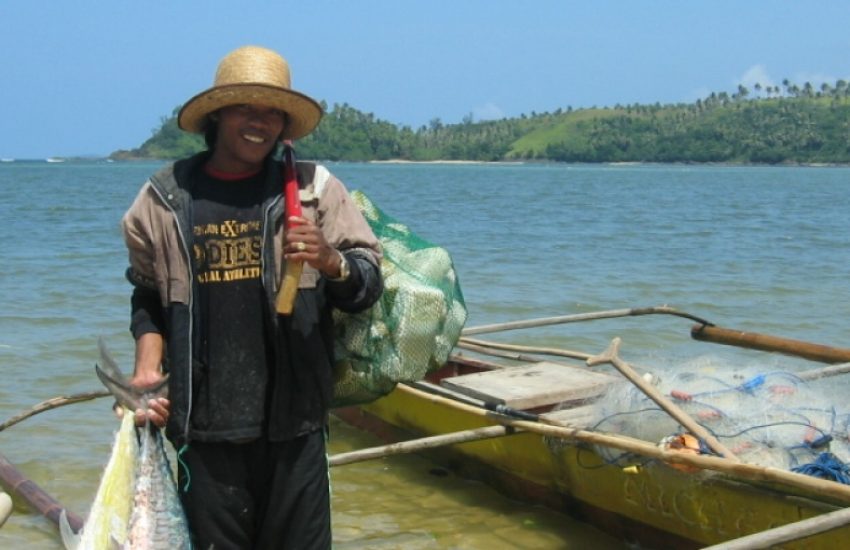Guguk village in Indonesia protect their customary forest
24 April, 2025

Guguk village in Indonesia protect their customary forest
24 April, 2025
One hundred NGOs call on WHO to adjust…
23 April, 2025
Friday 23 october 2020
Header photo: Fisherman in the Philippines © IUCN NL
The tropical waters around the Philippines are among the most biodiverse in the world. The island group lies at the tip of the Coral Triangle: an area 150 times the size of the Netherlands containing 75 percent of all known coral species and sheltering more than 3,000 fish species. It is no surprise that the local people make extensive use of what the marine world has to offer. Roughly 65 to 90 percent of the protein in their diet is from fish. In the last few decades, the pressure to feed the growing population, among other things, has led to dangerous levels of overfishing. Many fishermen use dynamite and a poisonous substance called cyanide to catch fish, causing important fish nurseries, such as mangroves, coral reefs and sea grass beds, to disappear rapidly. In the past 40 years, 40 percent of the reef and mangroves in the Coral Triangle have died. The local fishermen in Lamit Bay, some 200 kilometres from the capital Manila, are catching fewer fish and smaller fish with each passing year.
IUCN NL is working with the Philippine organization NSLC (Network of Sustainable Livelihoods Catalysts) to get three areas in Lamit Bay declared as marine sanctuary in order to allow the fish population to reproduce and grow in size. Larger fish are good for the expansion of fish populations: a snapper (a bass-like fish) of 11 kilos produces the same amount of eggs as 250 snappers of 1.1 kilos each. The local people of Lamit Bay are closely involved in the project. To ensure long-term effects, they have been educated on the importance and advantages of sustainable fishing and made responsible for maintaining and supervising the protected areas, together with the local authorities.
Thanks to the IUCN NL/NSLC project, the practice of fishing using dynamite and cyanide has reduced by 50 percent. The underwater landscape is recovering: the coral cover on the reef has increased by 10 percent, sea turtles and whale sharks are returning and fish levels in the area have tripled. The local people are reaping the benefits from the area’s sustainable management: 1,338 families have seen their daily catch increase. IUCN NL and NSLC are currently working on a follow-up project that will involve another 5,000 families.
In order to view this movie you have to accept ‘Social media and advertising’ cookies. Click here to change your cookie settings.
24 April, 2025
The Indigenous Marga Pembarap people of Guguk village in the province of Jambi, Indonesia have a long history of living…
23 April, 2025
IUCN NL, together with Stichting SPOTS and Environmental Investigation Agency (EIA), initiated a letter to be sent to the Director…